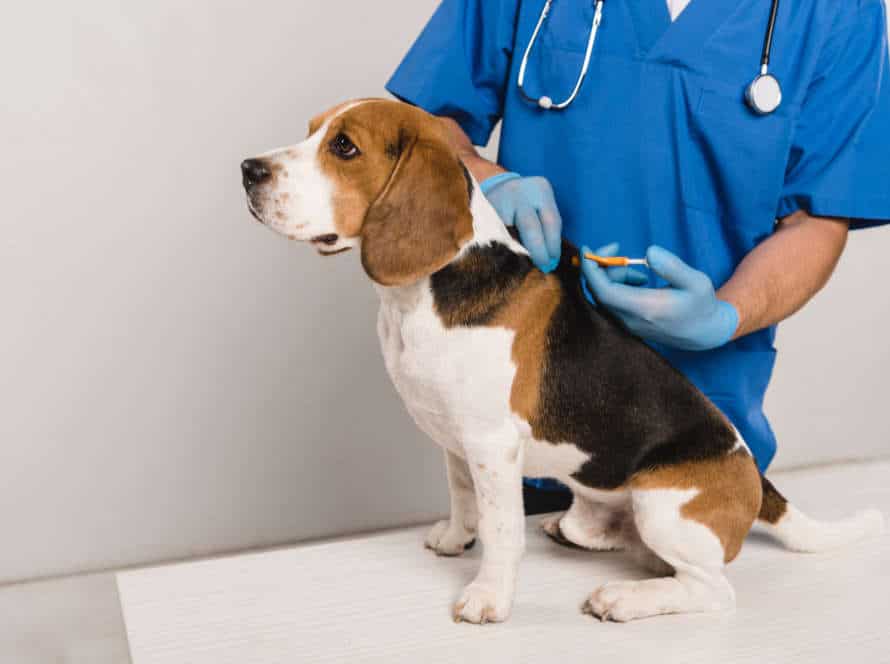The Cost of Spaying and Neutering: Financial Planning Tips
Spaying and neutering your pets can be costly, but there are ways to make it more affordable. Here are some tips to consider:
- Find out if there are low-cost clinics or programs in your area. Animal shelters and non-profits may provide these services at a discounted rate.
- See if vets offer payment plans or financing options. This can help you spread out the cost over several months.
- Look into pet insurance or a pet health savings account. This can help cover the costs and provide financial protection.
By following these tips, you can spay/neuter your pet without breaking the bank.
Understanding the Costs Involved
Spaying and neutering can be beneficial for pet health, population control, and behavior. But, there are costs associated with this. Before you decide to spay or neuter your pet, it is important to understand the costs. This section will go into the financial aspects of spaying or neutering.
The cost of spaying and neutering for males and females
Spaying and neutering for males and females varies. Factors such as location, clinic, age, breed, and weight play a role. Pet owners should expect to pay $200-$800. This will save you money in the long run by preventing medical or behavioral issues.
Here’s what affects cost:
- Age of pet – Puppies and kittens can be cheaper.
- Gender – Neutering males is usually less costly than spaying females due to less invasive surgery.
- Breed and size – Larger or purebreds need more anesthesia and longer recovery and so may cost more.
- Additional services – Medication, microchipping, and other services might be available.
Knowing the costs of spaying and neutering helps pet owners plan and budget and keeps their furry family members healthy and happy.
The cost of additional services or treatments
Spaying and neutering are must-dos to keep your pet healthy and save you from unexpected costs. Knowing the extra services and treatments that go along with them is vital for pet parents to manage their finances.
These may include pre-surgical bloodwork, pain medication, antibiotics, a cone of shame or e-collar, and follow-up appointments. Talk to your vet about these options beforehand and be aware of extra costs that could come up. Low-cost or subsidized programs are out there, so look into those.
Pro tip: Investing in spaying or neutering your pet pays off in the long run – fewer litters, medical treatments, and behavioral issues!
The cost of any aftercare or follow-up visits
Think about the cost of aftercare before neutering or spaying your pet. The initial cost depends on the age, breed, and health of your pet. Further visits can add to this.
Extra costs can be medications, pain-relief injections, and possible complications.
Minimize these costs by searching for low-cost spay/neuter clinics near you. Check for discounted rates during special events. Contact animal welfare organizations for financial help.
The financial benefits of spaying/neutering your pet are better than the initial costs. It stops unwanted litters and reduces health issues like reproductive cancers.
Tip: Ask your vet about follow-up visits and possible additional costs.
Finding Low-Cost Spay/Neuter Options
Spaying and neutering are important for keeping pet populations in check. However, it can be costly.
Good news! There are lots of low-cost ways to spay/neuter your pet. We will look at the different options out there. This way, you can find the best one for you and your pet – and stay within your budget!
Local animal shelters and humane societies
Local animal shelters and humane societies provide low-cost spay/neuter options for responsible, budget-minded pet owners. Spaying or neutering your pet can prevent unexpected litters and reduce the risk of certain cancers. It also makes your pet less likely to run away or show aggressive behavior.
Many animal shelters and humane societies offer affordable spay/neuter services and financial aid for low-income families. To find a low-cost option near you, reach out to your local animal shelter, humane society, or animal welfare organization.
Spaying or neutering your pet is an investment in their health and your finances. Put aside some money each month and don’t be afraid to ask for help if you need it.
Preventing unwanted litters and caring for your pet is a team effort. Take the step to spay/neuter your pet and contact local animal organizations for support.
Spay/neuter clinics
Spay/neuter clinics offer low-cost options for pet owners. They help reduce animal shelter overpopulation. These clinics provide various services, like spay/neuter surgeries, vaccinations, and microchipping.
Ways to find low-cost spay/neuter options:
- Contact local animal shelters, humane societies, or rescue orgs. They may offer programs.
- Ask local vet clinics if they have discounts or low-cost options.
- Look for mobile clinics that offer affordable services.
Spaying/neutering your pet can save you money, by avoiding health issues and unwanted litters. Plan ahead by considering costs, and exploring low-cost options.
Pro tip: Check regulations and licensing requirements for spayed/neutered pets.
Community programs and initiatives
Community programs and initiatives offer low-cost spaying and neutering options for pet owners in need of financial help. For example, the ASPCA Spay/Neuter Alliance provides top-notch, affordable services at its Asheville, NC clinic. The Humane Society of the United States has a database of low-cost services around the country. PetSmart Charities offers clinics with affordable prices at certain locations. Plus, various local animal shelters and rescue groups provide low-cost spaying and neutering services to their communities. Take advantage of these opportunities to save money while giving your pet the best care! Remember: spay or neuter your pet for their well-being and to prevent health issues.
Budgeting for Spay/Neuter Expenses
Getting your pet spayed or neutered is a must for all pet owners. Not only does it help combat pet overpopulation, it can also save you money in the long-term. Spaying and neutering are pricey. So, it’s crucial to plan and budget for these expenses. Here are some tips on how to budget for spay/neuter costs:
Creating a separate savings fund for pet healthcare costs
Creating a savings fund for pet healthcare is key. Setting up a separate fund to cover spaying/neutering is great. Here are some tips:
- Research vets who offer reasonable costs.
- Set a savings goal and make a separate account. Set up contributions to this account.
- Budget for extra costs such as tests, meds, post-op check-up fees.
- Consider pet insurance to manage annual healthcare costs.
By planning and budgeting, you can have financial peace of mind for your furry friend.
Setting up a recurring automatic transfer to this fund
Establish a regular, automatic transfer to a fund specifically for spay/neuter costs. Here’s how:
- Pick a bank account or financial tool to create the fund.
- Figure out how much you can allocate each month.
- Set up a recurring automatic transfer from your checking account to the fund on a fixed date each month.
- Check your progress regularly to make sure you’re hitting your savings targets.
By doing this, you’ll have a fund for spay/neuter expenses and won’t have to stress about unexpected costs. Pro Tip: You can also use the fund for pet-related health emergencies.
Reducing other pet-related expenses to free up more money
Owning a pet can be costly, but there are a few ways to save money on pet-related expenses so you can allocate more funds towards spaying and neutering. Here’s what you can do:
- Buy in bulk or online to get discounts and avoid shipping costs.
- Make your pet’s food at home with inexpensive, healthy ingredients.
- Use natural treatments for minor health issues before visiting the vet.
- Find low-cost vaccination and wellness clinics.
Spaying and neutering is an important part of being a responsible pet owner. It prevents unwanted litters, reduces the risk of health problems, and improves pet behaviour.
Pro Tip: Research low-cost spay and neuter clinics in your area or contact local animal shelters for financial assistance programs.
Financial Assistance Programs for Spaying and Neutering
Spaying and neutering pets is very important. It helps control pet overpopulation. There are ways to reduce the cost. Cities and animal welfare organizations provide financial assistance programs. These can help pet owners pay for spaying and neutering. Let’s look at the different types of programs, plus how they help with financial planning.
Nonprofit organizations that help with spay/neuter costs
Spaying/neutering your furry friend is a key part of responsible pet ownership. Unfortunately, it can be expensive. Thankfully, there are non-profit orgs that offer financial help.
These include:
- The Humane Society of the United States – They have a Spay/Neuter Fund for low-cost or free surgeries in underserved areas.
- PetSmart Charities – They work with local animal welfare orgs to provide affordable spay/neuter services and preventive care across the U.S.
- The ASPCA – They have a partnership with local animal welfare orgs to give access to low-cost spay/neuter services for pet owners in need.
- The Pet Fund – This non-profit offers financial assistance for veterinary care, including spay/neuter procedures.
By using these resources, pet owners can make sure their pet’s health & wellbeing comes first, without breaking the bank.
Veterinary schools that offer discounted services
If you’re on a budget, some veterinary schools offer discounted services for spaying and neutering. This can reduce the cost of the procedure and help with financial planning. Check out these schools:
- Cornell University – College of Veterinary Medicine
- Iowa State University – College of Veterinary Medicine
- Tufts University – Cummings School of Veterinary Medicine
- University of Florida – College of Veterinary Medicine
- University of Tennessee – College of Veterinary Medicine.
You can also search animal rescue groups or animal welfare groups in your area for financial assistance. Remember that spaying and neutering your pets not only helps with pet population but also has health and behavioral benefits. It’s an important part of pet ownership.
Government programs that provide financial assistance
Are you looking for financial assistance to spay or neuter your pets? There are government programs available to help! They aim to reduce pet ownership costs, while encouraging responsible animal population management. Here are some of the options:
- The Humane Society of the United States (HSUS) provides a database of spay and neuter clinics. You can find them near you using your zip code.
- The ASPCA also has a search tool to locate low-cost spay and neuter programs in your area.
- Plus, some state and local governments provide vouchers or subsidies for pet owners. Check with your animal control agency or humane society to learn about these programs.
By taking advantage of these services, you can reduce the cost of spaying/neutering and make it easier for everyone. Pro Tip: You’ll also get health and behavioral benefits from spaying/neutering your pets!
Conclusion: The Importance of Spaying and Neutering
Be responsible – spay and neuter your pet! It reduces pet numbers, curbs behaviors, safeguards health, and saves money. We’ll show you how to save on the cost of spaying and neutering. Read on to learn more!
The benefits for your pet’s health and happiness
Spaying and neutering your pets can bring lots of benefits. Including:
- Improved physical health. Like reducing the risk of certain cancers and infections.
- Better behaviour. Neutered males are less likely to roam or mark their territory. And spayed females won’t go into heat.
- Reduced aggression. Neutered males are less aggressive towards humans and other animals. While spayed females are less likely to show aggression towards other females.
- Financial advantages. The cost of spaying and neutering is usually lower than the cost of looking after a litter of puppies or kittens. Many vet clinics offer affordable packages. And some animal welfare organizations provide free or low-cost options for low-income households.
By spaying or neutering your pet, you can make their life better. Plus, you’ll be helping to reduce pet overpopulation and the number of animals in shelters. A win-win situation!
The positive impact on the larger community and animal welfare
Spaying and neutering programs have a great positive effect on the community and animal welfare. These programs can stop unwanted litters, and also have a big impact on animals, the environment, and society. Studies prove that these programs can lower animal overpopulation, lower the amount of abandoned animals, and reduce animal deaths.
Spaying and neutering also have health advantages. It can lower the chance of pets getting cancer, reduce aggressive behavior, and avoid reproductive health problems. The cost may vary, but local animal shelters and vets often have low-cost options. There are also ways to save money, like planning ahead. In the end, spaying and neutering pets is a responsible choice that helps the pet owner and society.
The long-term cost savings of spaying and neutering
Spaying and neutering your pet may cost you initially. However, it can save you much money in the long-term. Female pets can avoid uterine cancer or costly infections with spaying. Neutering male pets prevents aggressive behavior, roaming, and unwanted litters.
The cost for spaying/neutering depends on the type/size of animal, location and vet’s fees. Consider the long-term savings on food, shelter, and maintenance costs. Plus, many animal shelters, clinics, and local authorities offer low-cost or free spay/neuter services. So, spaying/neutering is responsible and a smart financial move.
Pro Tip: Get pet insurance to save further on medical bills and emergencies.
Frequently Asked Questions
1. What is the average cost of spaying and neutering a pet?
The cost of spaying or neutering a pet can vary depending on your location and the size of your pet. However, on average, the cost ranges from $50 to $300.
2. Why is spaying or neutering important for my pet?
Spaying and neutering are essential procedures that can help prevent health issues in pets, such as cancer, and reduce the likelihood of behavioral problems. Additionally, spaying or neutering can help control pet overpopulation.
3. Can I find low-cost options for spaying or neutering my pet?
Yes, there are low-cost options available for spaying or neutering your pet. You can contact your local animal shelters or rescue organizations as they often offer low-cost or even free spay/neuter clinics for pets.
4. Is spaying or neutering a one-time cost, or will there be additional expenses?
The cost of spaying or neutering includes the surgery and any necessary medications for recovery. However, there may be additional costs for pre-surgical bloodwork or post-surgery check-ups.
5. How can I financially plan for the cost of spaying or neutering my pet?
You can financially plan for the cost of spaying or neutering your pet by setting aside a budget for routine pet care expenses. Additionally, you can consider investing in pet insurance or a savings account dedicated to pet care expenses.
6. Are there any negative side effects of spaying or neutering my pet?
In general, spaying or neutering is a safe procedure, and the benefits outweigh the risks. However, there may be some temporary side effects such as lethargy or loss of appetite, but these usually subside within a few days.







